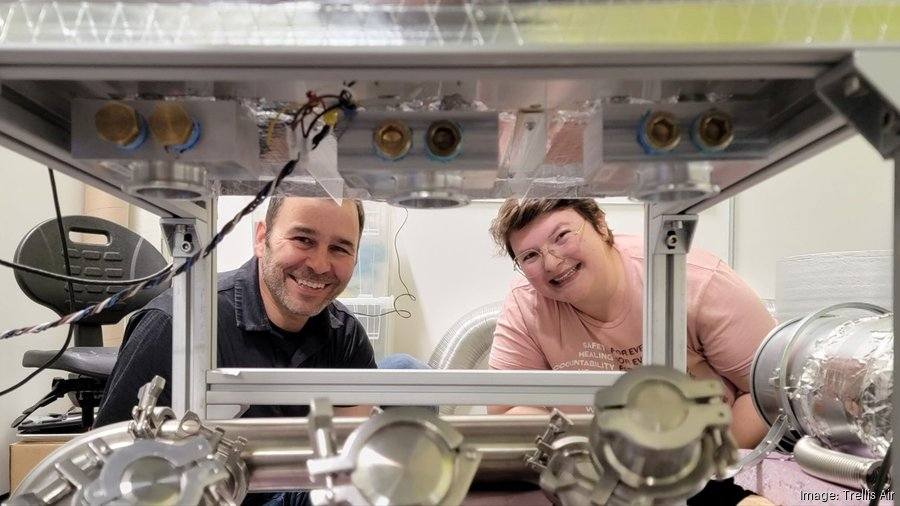The Franklin stove is a remarkable invention attributed to the brilliant mind of Benjamin Franklin, often overshadowed by his more famous contributions like the lightning rod and bifocals. Developed during the harsh winters of the early 18th century, this innovative heating system revolutionized how people adapted to their climate, providing greater warmth with significantly less fuel. As historians explore the history of heating technology, they highlight the stove’s enduring impact on domestic comfort and energy efficiency. Beyond its practical applications, the Franklin stove also offers insights into atmospheric science, helping to deepen our understanding of air movement and even the Gulf Stream. This intersection of invention and environmental awareness illustrates how Franklin’s ingenuity continues to resonate in discussions about modern climate adaptations and sustainable solutions.
Often referred to as Franklin’s Pennsylvania fireplace, the Franklin stove represents a significant advancement in home heating solutions from the 1700s. This ingenious design allowed for greater heat retention while using less wood, reflecting early efforts in energy efficiency during a time of environmental challenges. In examining this invention, we uncover not just a technological marvel, but a pivotal moment in the story of comfort and survival amidst the climate uncertainties of the past. As we consider related concepts such as heating technology and atmospheric phenomena, it becomes clear how Franklin’s work laid the groundwork for ongoing discussions in atmospheric science and climate adaptations. Thus, the Franklin stove is not only a piece of history but also a legacy that informs our present understanding of energy use and environmental stewardship.
The Franklin Stove: A Revolutionary Heating Solution
The Franklin stove, invented by Benjamin Franklin in the 18th century, revolutionized home heating during an era that faced severe winters, notably during the infamous Little Ice Age. By combining functional design with innovative science, this stove provided a solution to the inefficient and hazardous open fireplaces of the time. The stove’s unique flat-pack design allowed easy assembly and more efficient heat generation by burning less wood while increasing warmth in homes. This advancement demonstrated how scientific understanding could be translated into practical applications, influencing both home comfort and energy use in an age when heating was a critical concern.
Not only did the Franklin stove provide immediate comfort, but it also sparked a broader conversation about energy consumption and climate adaptations among early American settlers. Franklin’s design aimed to address the growing problem of deforestation caused by increasing populations and rising demands for firewood. His innovative approach highlighted how technology could improve lives while taking environmental considerations into account, setting a precedent for future innovations in heating technology. This evolution is significant within the broader history of heating technology, as it marked a shift toward more sustainable practices.
Benjamin Franklin’s Scientific Legacy
Benjamin Franklin’s contributions stretched far beyond the invention of the Franklin stove; he was also a key figure in the advancement of atmospheric science. His work on understanding the Gulf Stream not only aided navigation but also deepened the comprehension of weather patterns and oceanic conditions. Franklin utilized his heating innovations to explain complex atmospheric phenomena, making scientific concepts accessible to the general public. By translating technical ideas through practical examples, Franklin bridged the gap between science and everyday life.
Chaplin’s exploration into Franklin’s inventions illustrates the interconnectedness of his work with ongoing environmental challenges. As the effects of climate change become increasingly prominent, Franklin’s early climate adaptations resonate with modern-day concerns. His focus on improving energy efficiency through inventions like the Franklin stove serves as a reminder of the importance of sustainable technology, suggesting that science and innovation can play a pivotal role in addressing current environmental crises.
The Impact of the Little Ice Age on Franklin’s Innovations
Historically, the period of the Little Ice Age had profound effects on European and American societies, propelling figures like Benjamin Franklin to innovate solutions for struggling populations. The harsh winters of 1740–1741 prompted Franklin to design a heating system that not only mitigated the frigid temperatures but also addressed the increasing scarcity of firewood. This stove became a symbol of human resilience and ingenuity, showcasing how the uncomfortable realities of climate change inspire technological advancement.
Franklin’s work during this tumultuous time reveals his acute awareness of environmental challenges and the interplay between climate and technology. By developing a stove that utilized wood more efficiently, Franklin confronted the deforestation crisis head-on, highlighting a critical moment when energy scarcity met innovative thinking. His legacy continues to serve as a model for engineers and scientists today, encouraging new solutions that consider both human needs and ecological balance.
Franklin’s Addressing Emissions and Air Quality
In addition to improving heating efficiency, Franklin was deeply concerned with air quality and emissions, a topic that resonates strongly in today’s environmental discourse. His efforts to design stoves that re-burned smoke illustrated his commitment to reducing pollution and promoting cleaner air, an issue that has only become more critical with the advent of industrialization. By tackling the problems associated with smoke emissions, Franklin laid the groundwork for modern discussions on air quality and public health.
This historical perspective emphasizes how emissions were a matter of public concern even in Franklin’s time, showcasing an early awareness of the health impacts associated with environmental degradation. His innovations not only aimed to offer warmth but also to ensure a healthier living environment. As contemporary discussions around climate change and air quality continue to evolve, Franklin’s legacy reminds us of the interconnected nature of technology, health, and environmental stewardship.
The Educational Role of Franklin’s Inventions
Franklin’s inventions extended beyond functionality; they served as educational tools, helping to spread scientific knowledge during a time when curiosity about the natural world was growing. His pamphlet explaining the principles of his stove demonstrated how heat works through convection, making complex concepts accessible to a lay audience. This scientific outreach fostered a greater appreciation for atmospheric science and encouraged the public to engage with scientific inquiry.
Through the Franklin stove and its accompanying explanations, Franklin inspired a generation to explore and understand the underlying principles of their environment. This connection between invention and education is critical, as it shows how technological advancements can simultaneously promote learning and awareness. Today, educators and innovators can draw from Franklin’s example, recognizing that the best inventions not only solve practical problems but also serve to enlighten and educate those who use them.
Climate Adaptations and Historical Context
The story of the Franklin stove unfolds within a broader historical context of climate adaptations. As settlers grappled with the challenges posed by the colder climate, Franklin’s innovative thinking offered practical solutions that minimized environmental impact while maximizing human comfort. The stove became a lifeline during the harsh winters, demonstrating how technology can inform climate adaptations that enhance quality of life.
Franklin’s foresight in addressing these environmental challenges reflects significant historical themes regarding energy use and sustainability. His work encourages contemporary discussions on how current technologies can evolve to meet future climate challenges, prompting individuals and communities to consider sustainable practices that align with environmental stewardship. This interrelation between history, technology, and climate resilience is essential as society navigates the complexities of the modern climate crisis.
Franklin’s Influence on Modern Technological Optimism
Chaplin’s insights into Franklin’s legacy highlight how his era’s optimism regarding innovation still resonates today. Franklin’s approach to problem-solving through invention showcases a belief that technology could effectively tackle environmental challenges. This techno-optimism, while valuable, also raises questions about the sustainability of quick fixes in the face of climate change, emphasizing the need for multifaceted solutions.
As today’s society confronts its own climate challenges, Franklin’s legacy serves as both inspiration and cautionary tale. It encourages modern innovators to pursue a diverse range of technological solutions rather than relying on a single magical answer. By learning from Franklin’s iterative approach, contemporary inventors and leaders can foster a culture of sustainability that adapts and evolves in response to ongoing environmental changes.
The Role of Franklin in Advancing Atmospheric Science
Franklin’s work in atmospheric science was groundbreaking, particularly his observations related to warm air and convection principles. This not only helped to refine heating technology, including the Franklin stove, but also contributed to a broader understanding of meteorological phenomena that are critical today. By revealing how different atmospheric conditions intersect, his findings contributed significantly to the field of atmospheric science.
His ability to simplify complex theories made them understandable and relatable, paving the way for future scientists. This legacy lives on as educators and researchers strive to communicate scientific findings in ways that engage and inform the public. Franklin’s influence continues to encourage curiosity about the natural world, demonstrating the importance of education in driving scientific advancement.
Practical Design and Its Societal Impact
The practical design of the Franklin stove highlights a critical interaction between technology and societal needs. By addressing urgent issues like heating during the Little Ice Age, Franklin proved that technology could provide solutions directly impacting daily life. The stove not only offered physical warmth, but also served as a cornerstone of comfort and wellbeing, emphasizing how design can directly influence human experiences.
As communities faced the challenges of climate and resource scarcity, innovations like the Franklin stove paved the way for new standards in heating technology. Franklin’s work inspired future generations to think critically about how inventions can adapt to meet evolving societal demands while simultaneously addressing environmental concerns—setting a foundation for both contemporary technology and sustainable practice.
Frequently Asked Questions
What is the Franklin stove and how did it relate to Benjamin Franklin’s inventions?
The Franklin stove, developed by Benjamin Franklin in the 18th century, is an innovative heating device designed to improve heating efficiency. Unlike traditional fireplaces, this stove utilized a unique convection principle to circulate warm air throughout a room, thereby maximizing heat output while using less wood. This invention not only exemplified Franklin’s ingenuity but also contributed to advancements in the history of heating technology, making homes warmer during the harsh winters of that era.
How did the Franklin stove contribute to understanding atmospheric science?
The Franklin stove played a crucial role in advancing the understanding of atmospheric science as it operated on the principle of convection, illustrating how warm air rises and circulates. Franklin used this concept to explain not only the indoor heating process but also various outdoor atmospheric phenomena, including storm systems and the Gulf Stream, thereby bridging domestic comfort with broader climatic insights.
What was the historical significance of the Franklin stove in relation to climate adaptations?
The Franklin stove holds historical significance as it was developed during the cold winters of 1740-1741, a time marked by severe climate conditions. It was designed as a climate adaptation strategy to provide more effective heating while reducing the reliance on firewood, thereby addressing concerns about resource scarcity and the environmental impact of deforestation. Franklin’s design encouraged energy efficiency in heating technology, reflecting an early understanding of environmental sustainability.
In what ways did Benjamin Franklin’s scientific pursuits influence his invention of the Franklin stove?
Benjamin Franklin’s curiosity about science and technology directly influenced the invention of the Franklin stove. His scientific explorations into heat and convection led him to create a stove that improved heating efficiency, reflecting his belief in the power of human ingenuity to solve practical problems. This invention highlighted how advancements in science could make significant contributions to everyday life, intertwining his work in atmospheric science with innovative heating solutions.
How did Franklin’s approach to emissions relate to modern environmental concerns?
Franklin was notably concerned about air quality and emissions, which he addressed in the design of the later iterations of the Franklin stove. His effort to re-burn smoke to minimize air pollution is an early example of environmental awareness akin to contemporary concerns about emissions and climate change. This proactive approach to minimizing pollutants highlights the enduring relevance of Franklin’s inventions in discussions about today’s environmental challenges.
What legacy does the Franklin stove leave in the context of historical heating technology?
The legacy of the Franklin stove is significant in the realm of heating technology, marking a pivotal shift from traditional fireplaces to more efficient heating solutions. Its popularity and efficiency laid the groundwork for modern stoves and heaters, influencing not only domestic comfort but also establishing principles that would guide future developments in the history of heating technology. This invention represents a critical intersection of innovation, science, and climate response in 18th-century America.
What lessons can we learn from the Franklin stove regarding current climate technology and innovations?
The lessons from the Franklin stove emphasize the importance of innovation in addressing climate challenges. Franklin’s approach demonstrated that effective solutions require continuous improvement and a combination of strategies rather than relying on a single breakthrough. His commitment to efficiency and sustainability in heating technology serves as a model for contemporary inventors and policymakers as they work to combat climate change through diversified technological advances.
| Key Points |
|---|
| Historian Joyce Chaplin explores Franklin’s invention, the Franklin stove, which improved heating during cold winters. |
| The stove’s design helped adapt to colder climates while being resource-efficient by using less wood. |
| Franklin applied principles of convection, linking indoor heating systems to outdoor atmospheric phenomena like storms and the Gulf Stream. |
| Franklin’s stoves aimed to reduce smoke emissions, showcasing his awareness of environmental concerns in the 18th century. |
| Chaplin emphasizes the need for multiple solutions to climate issues today, reflecting on Franklin’s legacy of innovation. |
Summary
The Franklin stove is a pivotal invention that intersects heating technology with scientific understanding. Benjamin Franklin’s work on the stove not only transformed how people heated their homes but also contributed significantly to early meteorological science. By improving indoor climate control and minimizing smoke emissions, Franklin demonstrated an impressive foresight into both environmental issues and technological innovation. His legacy is a reminder of the importance of addressing climate challenges with comprehensive and multifaceted strategies, as was evident in his thoughtful approach to heating solutions in the face of adversity during the Little Ice Age.








